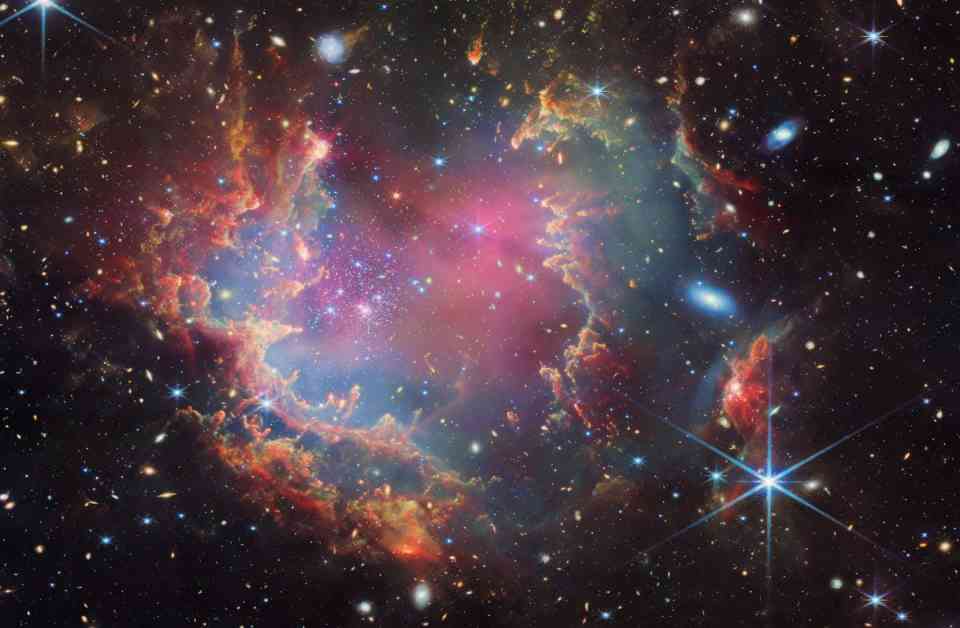An international research team may have achieved the first evidence of substellar celestial bodies outside our solar system with the discovery of brown dwarfs in the Small Magellanic Cloud. The European Space Agency ESA has announced this exciting discovery, made possible by the collaboration of the Hubble and James Webb space telescopes. These “failed stars” were found in a star cluster where stars form under very different conditions compared to our cosmic neighborhood.
Brown dwarfs are celestial bodies that are not massive enough to undergo nuclear fusion like stars, but are significantly more massive than (exo)planets. They share some characteristics with both, essentially representing an intermediate stage. While about 3000 brown dwarfs have been discovered in the Milky Way since the first one was found almost 30 years ago, the identification of the first candidates for brown dwarfs outside the Milky Way highlights the capabilities of the Hubble and James Webb space telescopes. According to Antonella Nota from the research team, they form an “amazingly powerful duo.”
The discovery of these brown dwarfs aligns well with the theory that the mass distribution of objects that do not undergo nuclear fusion is simply an extension of that of stars towards lower masses, as explained by Peter Zeidler from the ESA. The region where these objects are located contains relatively few elements heavier than hydrogen and helium, resembling the conditions of the early universe. Therefore, this research brings us closer to understanding the formation of stars during that period. The research on the discovery of brown dwarfs has been published in The Astrophysical Journal.
In addition to shedding light on the existence of brown dwarfs outside our galaxy, this discovery opens up new possibilities for studying the formation and evolution of celestial bodies in different environments. Understanding the properties and behavior of brown dwarfs can provide valuable insights into the diverse processes that shape our universe. Moreover, the successful collaboration between the Hubble and James Webb space telescopes demonstrates the importance of international cooperation in advancing our knowledge of the cosmos.
Overall, the discovery of brown dwarfs in the Small Magellanic Cloud represents a significant milestone in astronomy, expanding our understanding of celestial objects beyond the Milky Way. This breakthrough not only showcases the power of cutting-edge technology like space telescopes but also emphasizes the continuous exploration and discovery of the vast mysteries of the universe.

















